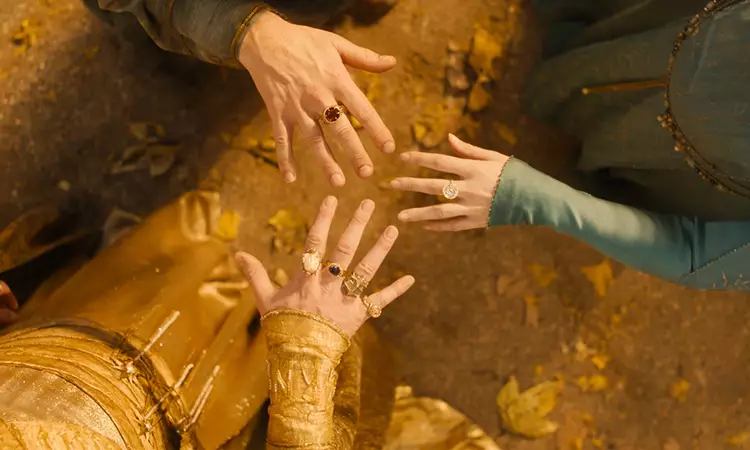The second season of *The Lord of the Rings: The Rings of Power* plunges viewers into a rich tapestry of conflict and intrigue, beginning with a startling revelation that Halbrand, portrayed masterfully by Charlie Vickers, is actually Sauron in disguise. This twist not only reshapes the narrative trajectory, but it also deepens the exploration of good versus evil. The revelation serves as a reminder of the insidious nature of deception and manipulation, especially as Sauron lies in wait to exploit the weaknesses of Middle-Earth’s key players.
The show adeptly delves into the lore of Tolkien’s universe, examining the implications of betrayal and the turmoil it creates. This season feels particularly focused on the psychological dimensions of its characters, especially the interaction between Lord Celebrimbor and Sauron. Their exchanges epitomize the ongoing battle between ambition and morality, highlighting how darker forces can prey upon the innate desires of individuals. The tension between these characters is a critical component of the story, serving as a microcosm for the broader battles facing the various races of Middle-Earth.
As the narrative unfolds, viewers are introduced to a host of new characters, enriching the world of *The Rings of Power*. Among them, Tom Bombadil, brought to life by Rory Kinnear with a delightful Cornish accent, stands out as a beacon of light amidst growing darkness. His whimsical yet wise demeanor serves as a catalyst for The Stranger’s (Daniel Weyman) journey toward self-discovery, exploring themes of destiny and purpose. This development adds layers to the storyline and reinforces the interconnectedness of the characters’ journeys.
In the realm of the dwarves, the dynamics of power and tradition come into play as King Durin (Peter Mullan) and Prince Durin (Owain Arthur) grapple with the influence of the rings, while Disa (Sophia Nomvete) navigates her newfound abilities. This subplot provides a much-needed perspective on gender dynamics, as Disa breaks traditional molds, revealing that power does not always rest on the shoulders of males.
The emotional and moral dilemmas faced by Galadriel (Morfydd Clark) continue to resonate throughout the season. Her character embodies a poignant struggle against the seductive allure of power, as she confronts temptation and defines her integrity amidst chaos. The narrative cleverly juxtaposes her trials against those of Isildur (Maxim Baldry), whose encounters with various threats serve as a microcosm for the larger battles that define this season.
As the multiple storylines converge, the climax is marked by the impressive battle sequences, which are masterfully choreographed and complemented by Bear McCreary’s haunting score. The fusion of McCreary’s compositions with Howard Shore’s iconic themes creates a powerful auditory experience that heightens the emotional stakes of the narrative.
The showrunners JD Payne and Patrick McKay have taken significant strides in expanding J.R.R. Tolkien’s world, providing a series that not only pays homage to its roots but also captivates both veteran fans and new viewers alike. While some characters, particularly the Harfoots, may feel underdeveloped, their presence injects an essential whimsy and romance into the intricate storyline. Overall, season two of *The Rings of Power* emerges as a compelling and visually stunning chapter that deepens the mythos of Middle-Earth, setting the stage for further exploration of its rich narrative landscape.

